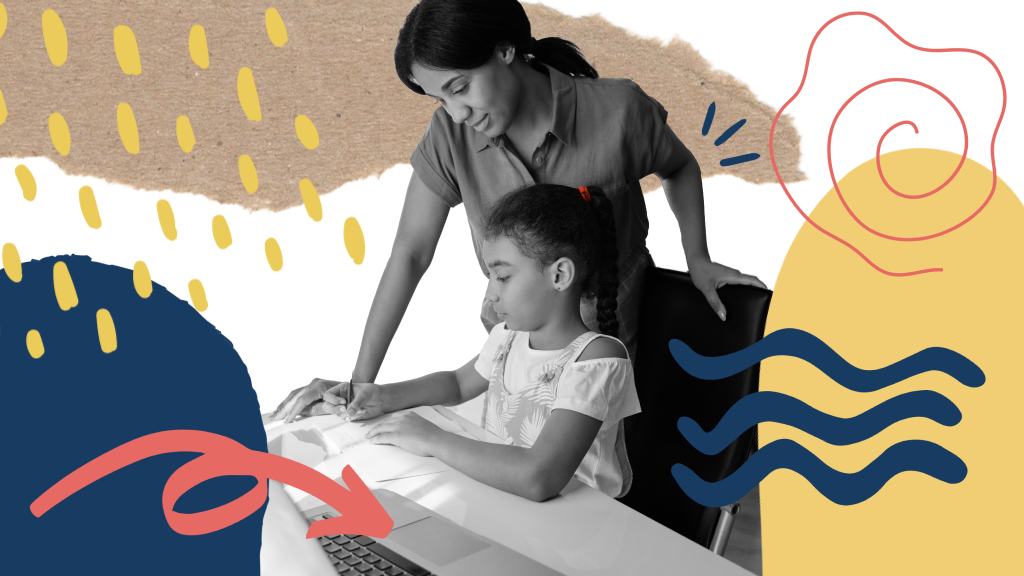8 Ways to Teach Your Preschool Kid About Money
8 Dec 2022

Financial education is one of the most important things you can give your child.
Helping them understand the value of money and how it works from a young age can support your child in developing healthy financial habits and set them up to make wise financial decisions in the future.
It’s never too early to start having conversations with your child about financial literacy — by age three, kids can grasp basic money concepts, and by age seven, many of their financial habits are already set.
But you may be wondering how you can teach preschoolers about making sound money decisions in ways that are easy, accessible, and fun. If so, read on.
This article will cover eight age-appropriate money lessons that parents of preschoolers can use to teach their children about personal finances.
But first…
What Do Preschoolers Understand About Money?
The first step in teaching your child how money works is to understand what concepts they’re able to grasp, as this will make it much easier to teach them in ways that make sense to them.
By preschool age, many children are starting to understand the concept of money and can:
- Recognize different coins by the numbers on them, their color, size, and shape.
- Understand that things cost different amounts of money, such as buying toys versus buying ice cream.
- Understand they need to keep their money safe so that they don’t lose it.
- Keep track of how much they have.
Now that’s covered, let’s look at eight practical ways parents can teach their preschoolers about money.
1. Talk About Money
Talk to your kids about money, its value, and where money comes from — not just mom and dad’s wallet.
It’s okay to frequently expose young children to words like save, money, goals, plan, spend, earn, and work — even if they don’t fully understand these concepts yet.
Don’t fixate too much on having them memorize the different words — just let them be part of your normal conversations. The idea is to familiarize your child with financial concepts so that they don’t seem scary or overwhelming.
You can even read books to your preschooler that involve money-related themes, such as people going shopping, buying a house, or earning a living from a job. This is a great way to introduce financial concepts since children learn about a wide variety of topics from books.
2. Get Counting
Counting is a key life skill that will serve your child well for managing their money and many other things.
You can practice by counting coins and showing your child that when they have more coins, it means they have more money. This can help them understand the concepts of having more or less money, which in the future, will help them understand what they can and can’t afford.
Show your kid the different kinds of coins, allowing them to recognize the different shapes, sizes, and numbers on them. They won’t be ready to understand that the values of coins don’t depend on their size (for example, a five-cent coin is worth less than a ten-cent coin, even though it’s physically larger).
However, you can use coins as visual aids to introduce the idea that money can grow or shrink in quantity.
Group coins together and have them count them (the number of coins rather than adding the values together), then take some coins away and have them count again. This will introduce them to the concepts of adding and subtracting.

3. Teach Exchange
One of the hardest lessons to learn at this age is that making a purchase requires giving up something — in this case, money — in order to receive something.
However, this is an essential lesson to start teaching your little one that you can only spend as much money as you have, and when it’s gone, it’s gone.
They won’t be budgeting yet, but teaching the idea of exchange instills the idea that they will need to live within their means as they get older.
One way to teach this is to give your child a dollar to spend in the store. Have them choose something they really want and hand over the money to the store clerk to experience the exchange of money for goods.
4. Fun Is The Name Of The Game
Money lessons for preschoolers should be fun. Of course, you can and should talk to your child about ideas and concepts related to money. But using games and activities will help them understand these ideas in a practical way.
For example, you can play games such as “going to the grocery store” and practice spending money at home with real coins.
5. Go Out and About
One of the most effective ways to teach your child about spending money is to take them to a store. Take your child shopping and show them how to handle money by buying something themself. This will build their confidence with money.
Going shopping is also a great opportunity to show your child the different forms of money available. For example, if you use a card to pay for your groceries, explain how it works. Let your child know that although you’re not using physical money, the money comes out of your bank account electronically.
Explaining concepts such as credit and debit cards may be too complex at this stage, but you can simplify the learning by building teachable moments into your everyday life.
6. Instill The 3 Principles: Saving, Spending, and Giving
It’s important to teach your child good money habits that will help prepare them for managing their own money in the future. Three of the most important financial principles to live by are:
- Saving
- Spending
- Giving
However, your preschoolers won’t be ready to grasp some of these abstract money concepts just yet. Therefore, you’ll need to provide tangible money management examples and ways to help them practice.
For example, a piggy bank is a visual aid that’s easier to understand than the concept of a savings account.
Therefore, you can teach your child the fundamental habits of saving, spending, and giving by creating three piggy banks:
- The savings piggy bank — where they save money
- The spending piggy bank — where they save money toward a specific spending goal (like a new toy) or just for general spending.
- The giving piggy bank — where they save money to make donations to those in need.

7. Encourage Waiting
A widely-cited Stanford study from 1970 showed that children who are better at practicing delayed gratification — waiting longer for a better payout later — tend to be more successful as adults.
By learning to wait, your child is less likely to give in to impulse buying or quick wins, and instead, see the value in waiting for even better results further down the line.
You can teach your kid to delay gratification by:
- Saying “no” — Don’t concede to every request.
- Not giving in. For example, if it’s only 30 minutes before dinner time and your child wants to eat, have them wait instead of giving them a snack.
- Tell your child you’ll think about it. If your child asks for something and you have no plans to purchase it, say you’ll think about it. Ask them to do the same and wait to see if they still want the item after some time.
8. Model Good Money Behavior
Another great way to teach your child about money is to set a good example. At preschool age, you are your child’s main role model, so your relationship with money is just as important as teaching your child about money — if not more so.
Seventy-seven percent of Americans say they feel anxious about money — and if your behavior around money is less than ideal, you’ll transmit those feelings to your kids, regardless of anything else you say or do.
Display good spending habits, such as budgeting, saving, paying bills and credit cards on time, and spending within your means. This will teach your child what financial responsibility looks like in action.
It’s also a good idea to celebrate with your kids when you achieve your financial or money-saving goals. For example, when you finally have enough to go on vacation or make a down payment on a house, make sure your kids know you worked hard, saved, and the money didn’t appear out of thin air.
Teach Your Preschooler Key Life Skills with Lessonbee
Teaching your kid about financial literacy or other core skills — such as having healthy relationships or balancing their mental and physical health — doesn’t have to be hard.
The Lessonbee content library contains a wide variety of free resources that empower parents to connect with their children while teaching them essential life skills that support their health and well-being.
Visit the Lessonbee content library to discover age-appropriate lessons that can help you set your preschooler up for a happy, healthy life.
Read More

Human Trafficking: Understanding the Impact and How to Help

A Guide to Social Emotional Learning for Homeschooling Parents

How to Help Your Child Deal With Online Harassment

Online Safety for Parents: How to Safeguard Your Child in the Digital World


